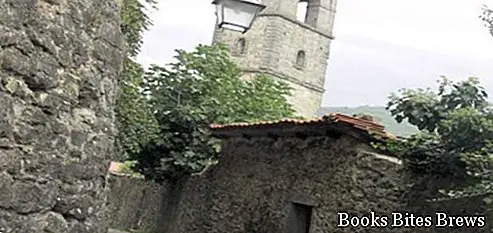What to see in Castiglione di Garfagnana, itinerary including the main monuments and places of interest of this ancient medieval village, rich in history and located in a very interesting territory from a landscape point of view.
Tourist information
Located about 50 km from Lucca, Castiglione Garfagnana is a fortified medieval village, located at an altitude of 540 meters above sea level. and immersed in an environment of great naturalistic interest.
Its origins date back to Roman domination, it was called Castrum Leonis, i.e. the lion's castle, built to control an ancient pass road of the Tuscan-Emilian Apennines.
The walls with its sturdy towers surround the village which partially preserves its original inhabited center, the fortification that we can admire today is the result of the expansion and enhancement works dating back to the fourteenth century, made by the Lucchesi when they managed to take possession of it for the second time, the first was between 1170 and 1227.
In 1014 the nobles Gherardinghi Wingildo and the sons of Albizio di Fraolmo, received in usufruct from Grimizzo bishop of Lucca some assets in Castiglione, of which they became the lords for a long period.
In friendship, sometimes with the Pisans and other times with the Lucchesi, at the end of the thirteenth century the Gherardinghi lost their hegemony.
In the following centuries Castiglione, due to its strategic position on a border between the Republic of Lucca and the State of Modena, was highly contested, in particular in 1603 and 1613 when the Estensi, who already occupied all the territories around the Vicariate of Castiglione, they tried to annex the Fortress to the Duchy of Modena, placing it with their militias under siege, but the population defended themselves valiantly and Lucca managed to maintain possession thanks to the intervention of the King of Spain Philip III who ordered the Duke of Modena to withdraw his troops.
After the Congress of Vienna, Castiglione passed to Maria Luisa di Borbone, Grand Duchess of Lucca, subsequently, in 1819 to the Duke of Modena Francesco IV.
Since 1923 Castiglione is part of the province of Lucca, you enter the village through one of the gates of the city wall, along via Roma you reach piazza Vittorio Emanuele III, where there is the Renaissance palace that houses the Town Hall and the ancient Pilon fountain .
What see
Church of San Michele
With a structure dating back to the thirteenth century, it is one of the oldest religious buildings in the country, probably Lombard, the gray stone wall facing is adorned with strips of red marble from the nearby Sassorosso quarries, rebuilt in the early fifteenth century in Gothic-inspired shapes.
Church of San Pietro
It is the oldest church in the country, stands at the foot of the Rocca and is mentioned for the first time in the 8th century, its consecration dates back to 1197. Only the wall remains of the original building, following the renovations carried out in the last century to the north adjacent to the Rocca and part of the facade wall,
- Artimino (Tuscany): what to see
- San Galgano (Tuscany): what to see
- Poggibonsi (Tuscany): what to see
- Castiglione di Garfagnana (Tuscany): what to see
- Tuscany: Sunday day trips
The fortress
In the highest part of the town, the fortress rises with the Torrione del Mastio, the main nucleus of the defense system. The towers rise in coincidence with the gates and the bell towers of the Churches of San Michele and San Pietro rise on top of two of them. Where the state road currently passes was the moat of the city wall which extends for 750 meters with the towers of Brunella, the drawbridge, the Fattori, San Michele and San Pietro, joined by curtains. In the northern part of the walls behind the Rocca are the Torrioncino del Gatto, the Torrione del Belvedere and the Torrione del Fondaccio and the bastion of the Torricella which represents the highest and most panoramic point of the Castiglione Fortification. The Rocca can be visited by booking at the Pro-Loco.
Medieval bridge
At about 500 meters from the Borgo, a green path leads to the medieval bridge of the mill, probably dating back to the 13th century. It can also be reached by car and is characterized by a single donkey saddle arch, built with local stones.
Events
- The Holy Representation of the Crocioni takes place on Holy Thursday before Easter, with the commemoration of the last supper, the kiss of Judas and the passion of Christ.
- On the first Sunday of the year, the Gift Festival takes place, a child aged 7 and over born in Castiglione, in recognition of the Madonna for saving the town during the plague in 1631, gives her gold frankincense and myrrh.
- Every 3 years the Festa del Carmine takes place, on the Sunday closest to July 16, the Madonna is carried in procession.
- La Festa della Befana that takes place on the evening of January 5 with groups of people disguised as befanotti and with the befana on their heads, they go from house to house to play and receive gifts.The party ends with the meeting of the groups in the town square.
- In August the days of the Medieval Festival are held which recalls life in the village in the thirteenth century.




